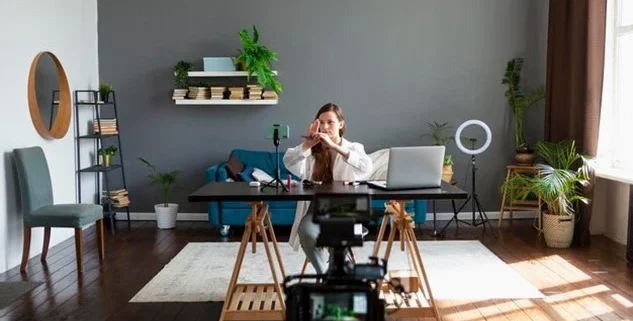Mental Health and Remote Work: How to Stay Positive and Motivated in a WFH Setup
The shift to remote work has created new challenges for employees, particularly regarding mental health and maintaining motivation. Working from home or in a WFH setup can blur the boundaries between professional and personal life, leading to stress, burnout, and a lack of focus. Adopting strategies that help you stay positive and motivated to ensure long-term success and well-being is essential.
- Create a Dedicated Workspace
One of the biggest challenges of a WFH setup is maintaining a clear separation between work and home life. To combat this, establish a dedicated workspace. Whether it’s a home office or a corner of your living room, having a space specifically for work helps you mentally shift into “work mode.” This separation can boost productivity and make it easier to switch off at the end of the day.
- Set a Routine and Stick to It
Having a structured daily routine can significantly improve mental well-being and motivation. Begin your day at the same time each morning, just as you would in an office environment. A consistent routine provides a sense of normalcy and helps you manage your time more effectively, preventing the chaos of an unstructured Work-from-home setup.
- Take Regular Breaks
In a WFH setup, it’s easy to fall into the trap of working longer hours without breaks. However, taking short, regular breaks is crucial for maintaining focus and reducing stress. The Pomodoro Technique, which involves breaking work into intervals and taking breaks, can effectively boost productivity and avoid burnout.
- Stay Connected with Colleagues
Remote work can sometimes feel isolating, which can negatively impact mental health. Stay connected with your team through video calls, chat platforms, or virtual coffee breaks. Regular communication helps foster a sense of community and provides an outlet for discussing work challenges or sharing personal experiences.
- Prioritize Physical Activity
Physical activity is essential for both mental and physical health. In a WFH setup, staying sedentary for long periods can be tempting. Incorporate short exercises or stretching routines into your day. Even a 10-minute walk outside can help clear your mind, boost your mood, and energize you throughout the day.
- Manage Your Work-Life Balance
A significant advantage of the WFH setup is flexibility, but it can also make it harder to “switch off” from work. Set clear boundaries between your work and personal time to maintain a healthy work-life balance. Establish a designated end to your workday and resist the urge to check emails or handle work tasks after hours.
- Practice Mindfulness and Relaxation
Incorporating mindfulness or meditation into your daily routine can help reduce anxiety and stress. Apps like Headspace or Calm offer guided meditation sessions that you can easily fit into your WFH setup. Relaxation techniques can help you stay calm, focused, and positive throughout the workday.
In a Nutshell
A WFH setup offers numerous benefits but presents unique challenges, particularly regarding mental health and motivation. By creating a structured routine, setting clear boundaries, and prioritizing self-care, you can maintain a positive mindset and stay productive while working from home. Stay connected with your team, take regular breaks, and make time for activities that nurture your mind and body to ensure long-term success in a remote work environment.
Ready to enhance your WFH setup for better mental health and productivity? Contact us for tailored remote work strategies that support a healthy and motivated work-life balance.












